Making the Mountains Whole Again
Plus - a new Wildlife District in L.A., California Outdoor Webcams, NPS Tells People Not to use AllTrails for Info, Slow Motion hummingbirds, and more
howdy
In 2014, President Barack Obama declared the San Gabriel Mountains National Monument via the Antiquities Act. For anyone who lived near or recreated in this massive mountain range just north of Los Angeles, it was an exciting day that was a long time coming.
But everyone who looked at the map of the monument was probably a little confused—why was so much of the mountain range left out?
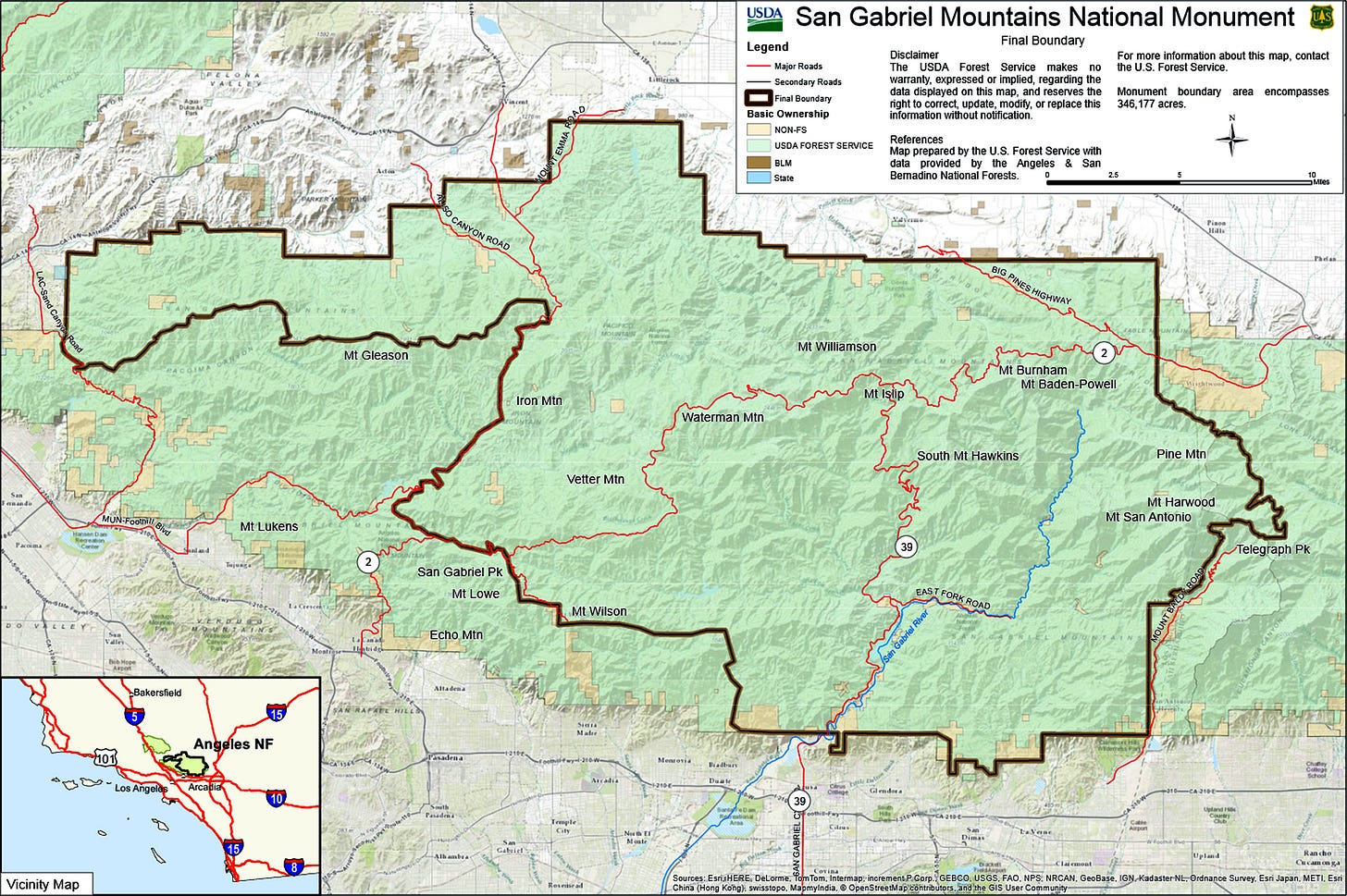
Honestly, it’s a question I’ve never heard a satisfactory answer to. For most people, a lot of what you think of when you think of hiking in the San Gabriel Mountains was excluded from the new monument: Mount Lukens, the highest point in L.A. City Limits. Placerita Canyon, where Californios found gold long before the more-famous strike in Sutter’s Mill. The exemplary Great Hiking Era ruins at Echo Mountain. The stunning and historic lower Santa Anita Canyon, with the only remaining pack mule station in Southern California and the oldest U.S. Forest Service structure in its original location. The Cucamonga Wilderness and the Three Tees Trail. Switzer, Millard Canyon, Trail Canyon, and Eaton Canyon waterfalls. The list goes on and on.
A lot of groups have been doing some serious work on the ground since then to try to rectify this situation (I am on the board of one of these organizations, Nature For All). Representative Judy Chu has been trying to advance this expansion through the legislature pretty relentlessly since 2014.
The problem is primarily political here—and it’s not local. An overwhelming bipartisan majority of local cities and federal legislators are on board with the expansion. But in national politics, partisanship reigns supreme and the bills have languished at the desks of Republican presidents and in Congress. Now Congressional representatives are worried Republicans in the House will scuttle the efforts again because they’re part of a package of conservation-minded bills that would add new wilderness areas and Wild and Scenic River designations elsewhere. And we can’t do that because … I dunno, it’d be nice?
So this week, Representative Chu was joined by California Senator Alex Padilla at the Eaton Canyon Nature Center to call on President Biden to use the Antiquities Act to finish what his old boss started. Although there are no guarantees, I have a good feeling about it. The Biden Administration seems happy to use the Antiquities Act to designate new monuments so far, and its Interior Department is actively pushing to conserve 30% of public lands and water by 2030.
I won’t get into the weeds on how monuments are managed here, because it’s very complicated and—like many things dealing with complex government bureaucracies—it’s boring, slow, and frustrating. Maybe in the future, though. And hopefully by then, the San Gabriel Mountains will be a single complete entity again.
The Big Story
Something to talk about
One Step Closer to a Wildlife District
After 9 years of meetings and workshops, the innovative proposed Wildlife District Ordinance is now just one city council vote away from becoming an established policy in the City of Los Angeles.
If enacted, the policy would create a “Wildlife supplemental use district” that would provide guidelines and regulations to encourage wildlife connectivity and habitat protection within the Santa Monica Mountains. The proposed regulations would ensure that future development keeps these goals in mind and creates incentives for landscaping with indigenous native plants (and banning some really invasive plants), set expectations for trash and food waste storage to prevent them from becoming attractive to wildlife, and lots of other stuff that we really, honestly should always be thinking about.
The proposed district would essentially consist of all of the Santa Monica Mountains land inside the City of Los Angeles between the 405 and 101 freeways, which is almost certainly inspired by the late, great mountain lion P-22’s migration across this landscape into Griffith Park. Much in the same way that an urban National Recreation Area like the Santa Monica Mountains NRA doesn’t just seize all land and turn it over to the Park Service, this wildlife district ordinance would only establish a set of rules and guidelines to ensure that future developments are consistent with maintaining wildlife corridors and habitat protection in this sensitive area.
The nonprofit group Citizens for Los Angeles Wildlife has been really working hard on moving this proposal along. You can learn more about their advocacy work here, and if you’re a glutton for government-approved PDF punishment, you can read the entire proposal here.
REMINDER: Live Event July 10!
I’m very excited to announce that I’ll be giving an online presentation about the best hikes in the Los Angeles area, courtesy of the Torrance Library. The Torrance Library was kind enough to host me for these events before, and I’ll be doing my jam-packed slideshow and hanging out afterward for Q&A. The event is free, and I’d love to see you there!
The presentation is on Monday, July 10th at 6PM. Get your Zoom link by emailing the library by July 7th. You can also call 310-781-7599 for more info.
Modern Hiking
Good stuff from the Modern Hiker site
The Zoo Stretches Out?
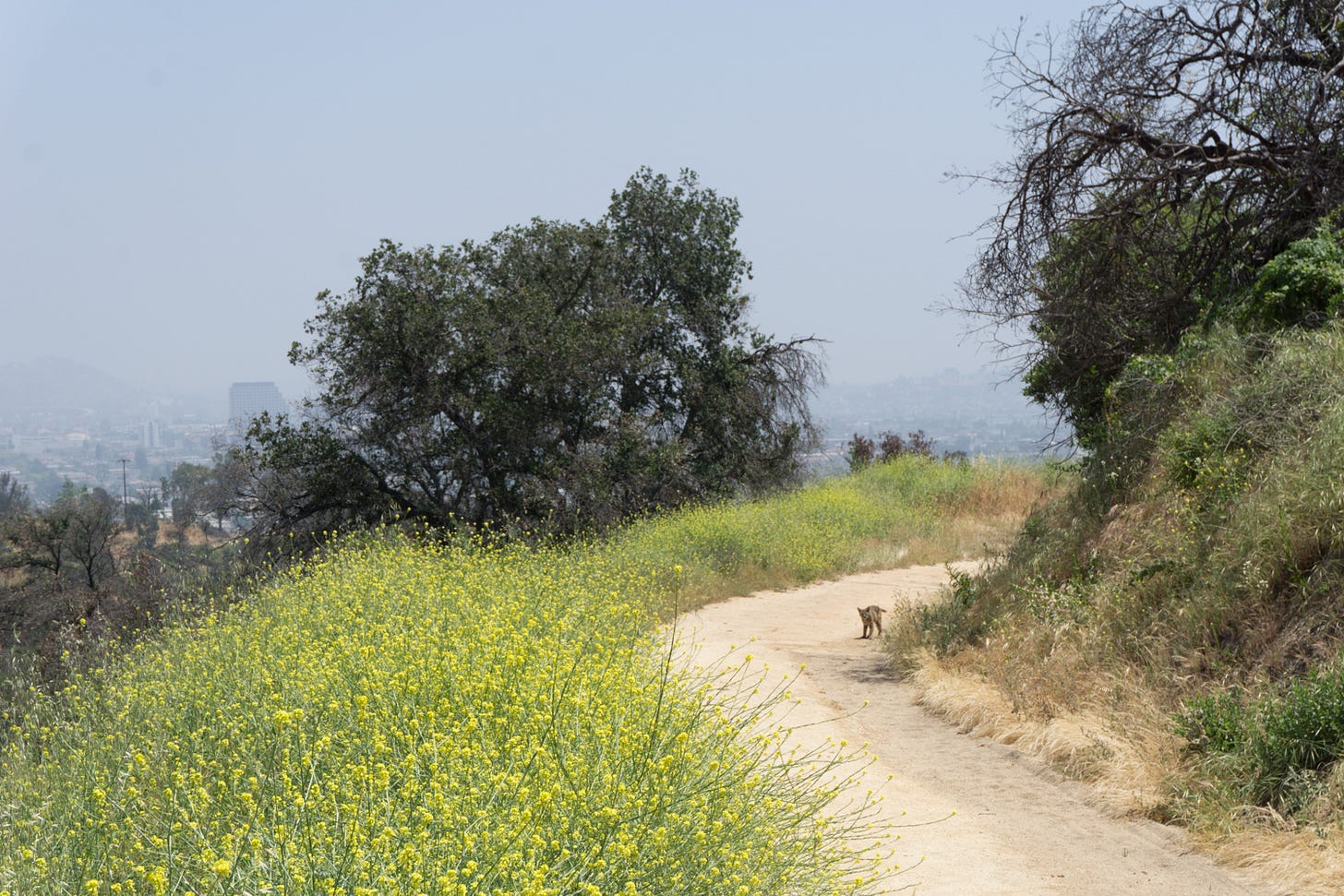
Lots of exciting outdoor news in the LA world this week, including some political action around the proposed expansion of the Los Angeles Zoo in Griffith Park. It was short notice on the hearing, but I did prep a quick commentary on what the Zoo is hoping to accomplish and how that might adversely affect the rest of Griffith Park.
Based on reports from people who were at the hearing at City Hall yesterday, the results had a feeling of predetermination. Despite hundreds of comments on file in opposition to the project and only a few in favor, the project was approved by the Neighborhoods and Community Enrichment Committee and will head to the full City Council next week.
If you live in Los Angeles, you can find and contact your City Councilmember here (Nithya Raman is the Councilmember whose district includes Griffith Park). However, because the L.A. Zoo and Griffith Park are statewide / national landmarks, I would not hesitate to contact the Council even if you don’t live inside L.A. City Limits (I’m doing this).
You can listen to the full audio of the meeting here.
Mountainfilms At Home
Our writer Andrew Shults was in Telluride for the Mountainfilms documentary film festival and put together a great roundup of some of the best selections—including a bunch you can stream from home right now! Which might be nice during one of those heat wave days, just in case you were looking for something cool to do instead!
Your Parks
Your Places
Remains of Julian Sands Discovered
In sad but probably not very surprising news, the remains of actor Julian Sands were discovered by hikers near Mount Baldy this week. Sands was reported missing on January 13, 2023 after heading to the Baldy Bowl area in winter conditions. The 65-year-old actor was known as an avid outdoorsperson but winter conditions throughout California were significantly tougher than average this year, and the San Gabriel Mountains were no exception.
The San Bernardino Sheriff’s Department noted the manner of death is still under investigation pending test results.
My condolences to the family and gratitude to all the Search and Rescue teams and volunteers who worked for this search effort.
Via Hollywood Reporter.
Tech Talk
Gadgets, Technology, and Hype
Grand Teton National Park Warns People Not To Rely on AllTrails
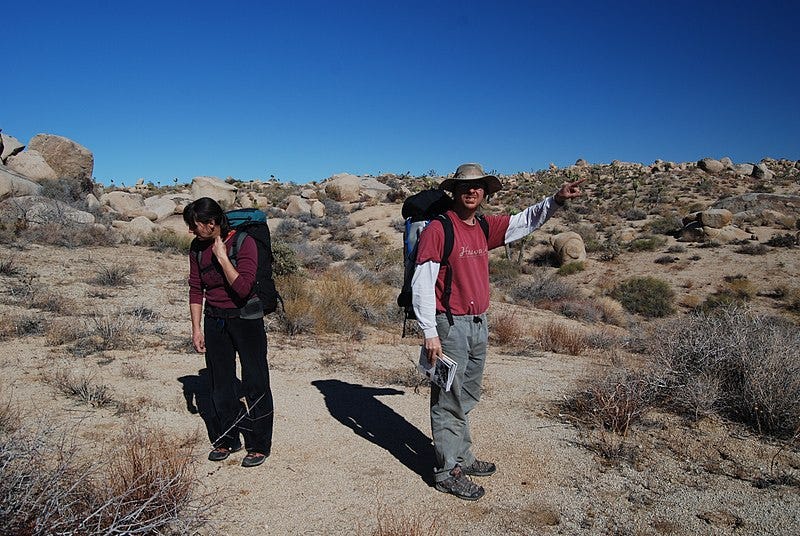
Both AllTrails users and the National Park Service have warned people researching hiking in Grand Teton National Park that the information on the AllTrails app has several inaccuracies that might get hikers and backpackers into some serious trouble, according to Jackson, Wyoming’s Buckrail.
From the descriptions, it seems like AllTrails is presenting routes as straightforward challenging hikes when in fact they require some more technical skills like bouldering, route-finding, bushwhacking, and even mountaineering.
Personally, I love using AllTrails but it’s always a first step when I’m searching new routes. I don’t think you’re ever going to get better overall beta and a feel for what a trail is really like than by reading a published local guidebook or tracking down a local hiking blogger, and of course the absolute best way to get the most current conditions is by contacting the land managers or rangers.
Wildfire Cameras Across California
Last month, the University of California San Diego launched a service called ALERTCalifornia, with the aim to provide new, quickly-updated live information about the terrain of California to help spot and monitor wildfires. With a network of more than a thousand cameras—some of which can move and stitch together live 360 panoramas—this real-time info has also been used to monitor snowpack and air conditions, as well as provide night vision for emergency managers and firefighters.
As an additional bonus, these cameras are also accessible to the public via a surprisingly user-friendly website. So if you are heading out to a region and you wanted to see exactly what the weather / sky conditions were, you could absolutely do that, too.
Wildlife Crossing
Wildlife and the Outdoors
Hummingbird Courtship in Slow-Mo

Surely you’ve heard the chirps or maybe even felt the little buzzing whirrs from dive-bombing hummingbirds on your hikes. I always try to keep an eye out for the little birds because, well, they’re very pretty to look at obviously. But also they’re so incredibly fast and precise with all of their movements and I just find them super impressive.
The excellent newsletter California Sun dug up this PBS footage of the Anna’s Hummingbird’s courtship flights, and it turns out these birds are kind of tiny little jet fighter missile machines in those split second dive-bombs!
One More Thing
Oh yeah, before I go …
If you’re like me, you probably squirrel away your airline miles in the hopes of someday taking an extravagant hiking trip in some distant corner of the world, only to find out you can usually only get a hundred bucks or so off some domestic West Coast flight. Not so for Tom Stuker, who took advantage of a seemingly insane promotion back in 1990 and bought a lifetime pass for United Airlines for $290,000. Since then, Stuker has flown 22 million miles and is basically treated like the owner of the airline.
There’s a fun story in the Washington Post about what Stuker has redeemed his airline miles for (for instance, a cameo in an episode of Seinfeld!). I don’t know if I could spend that much time on planes, though. And, you know, the whole carbon footprint thing. But still! Fun story!
ALSO,
I am working on a freelance project right now that is eating up a chunk of my time. So with that plus the July 4th holiday next week, I may take a week off the main newsletter to keep my sanity.
Until next time, Happy Trails,




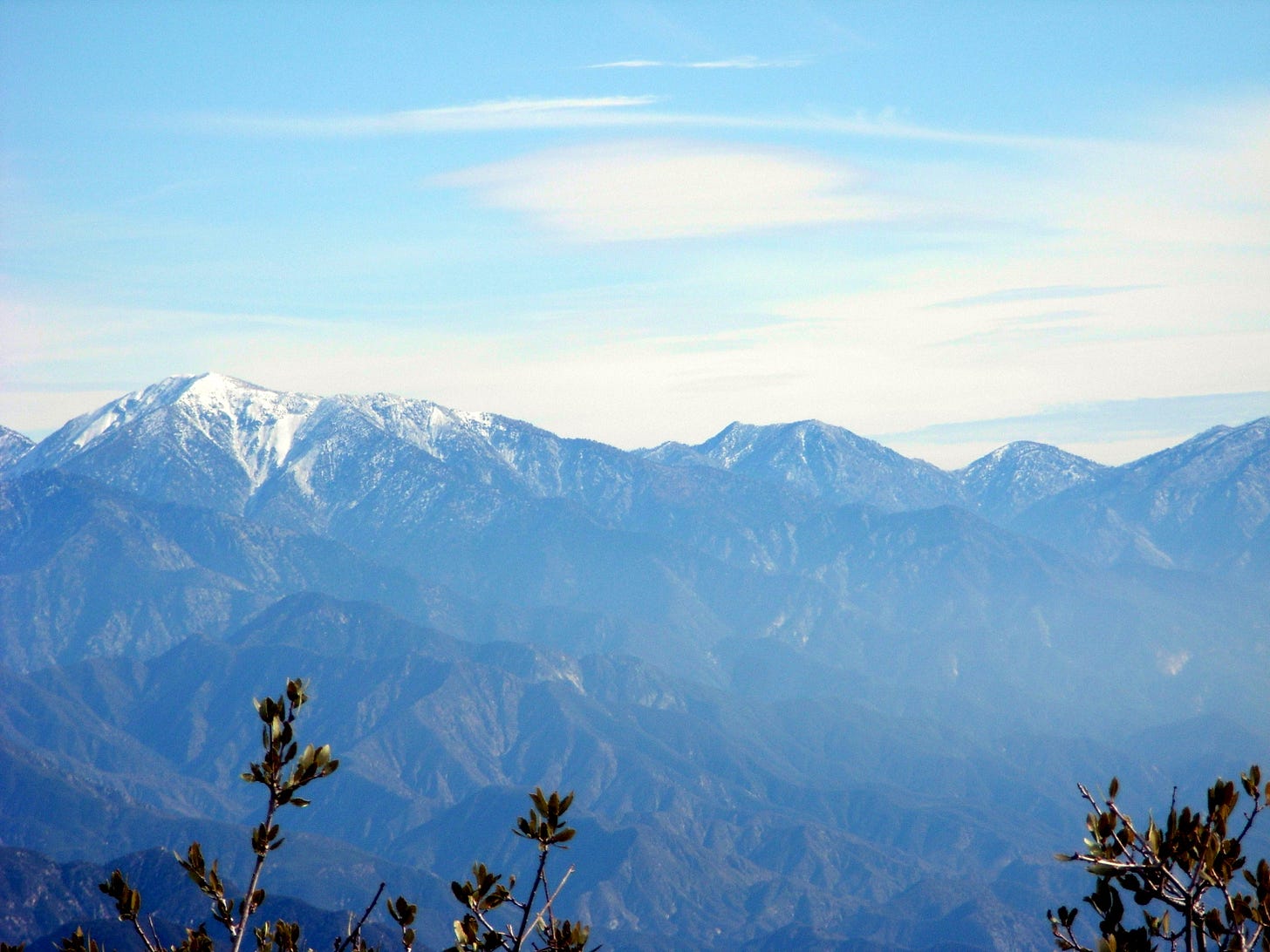
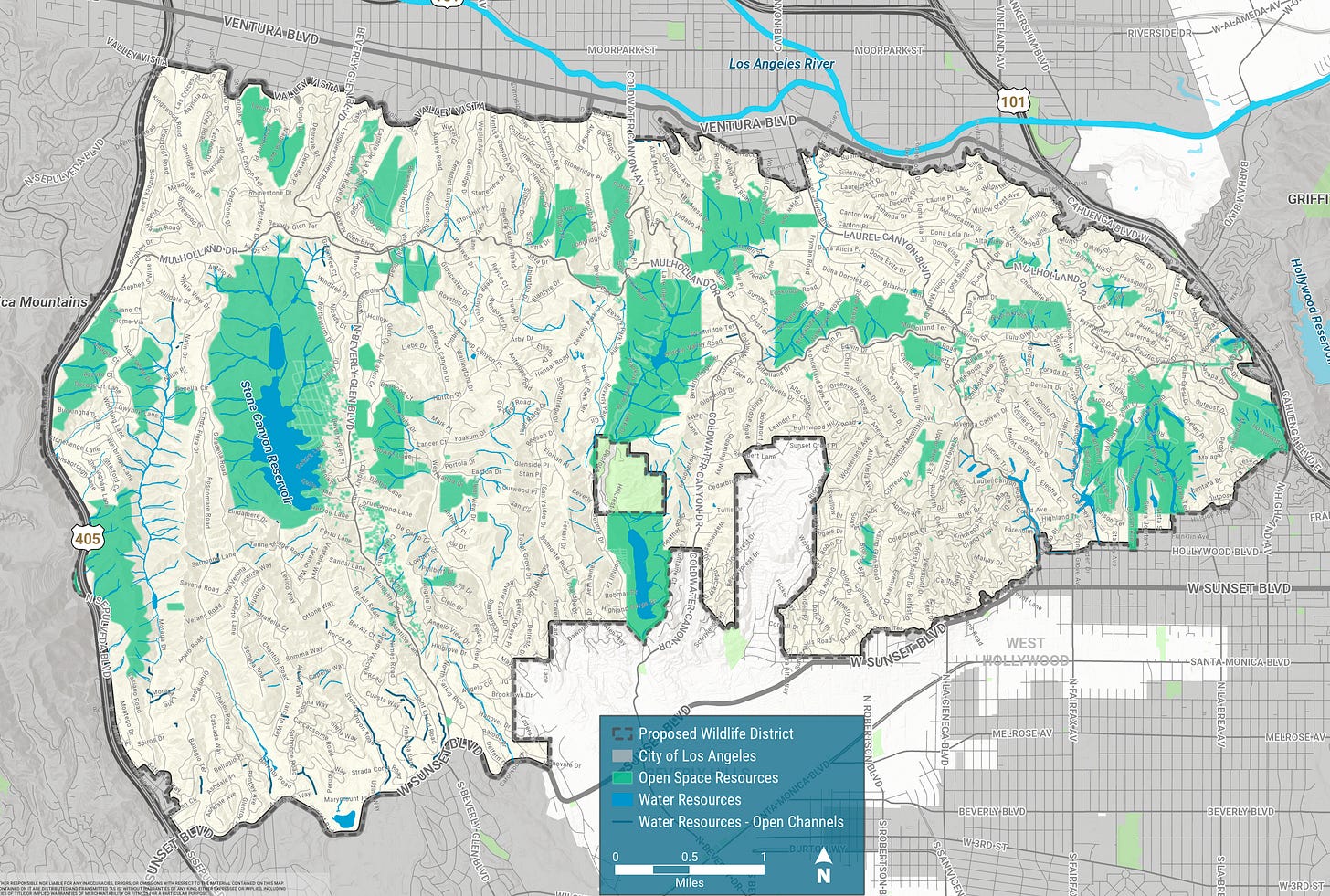

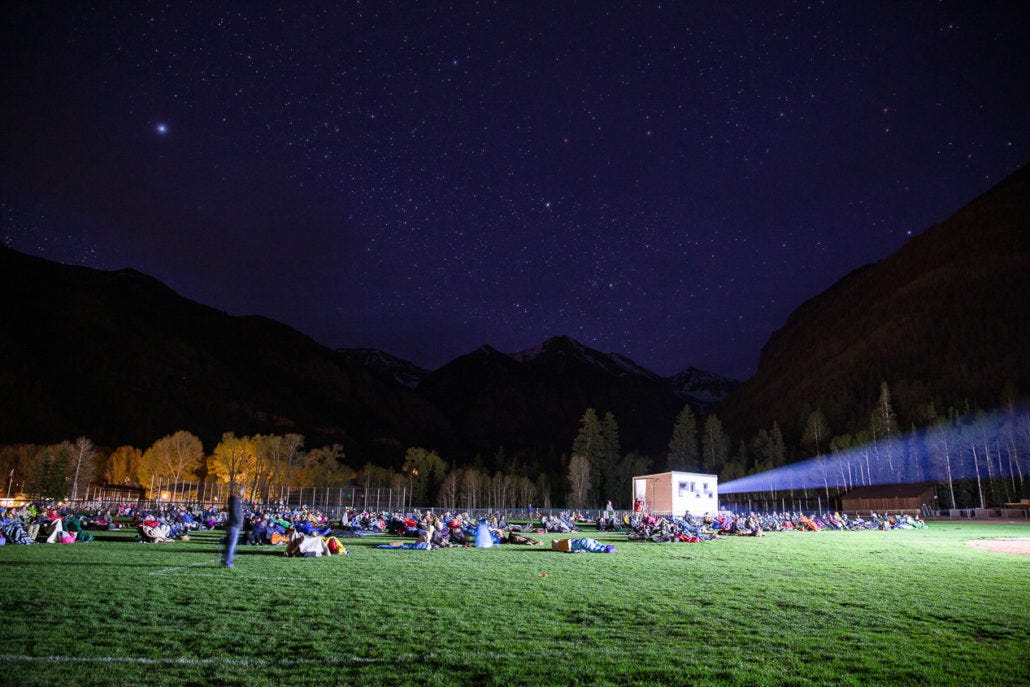

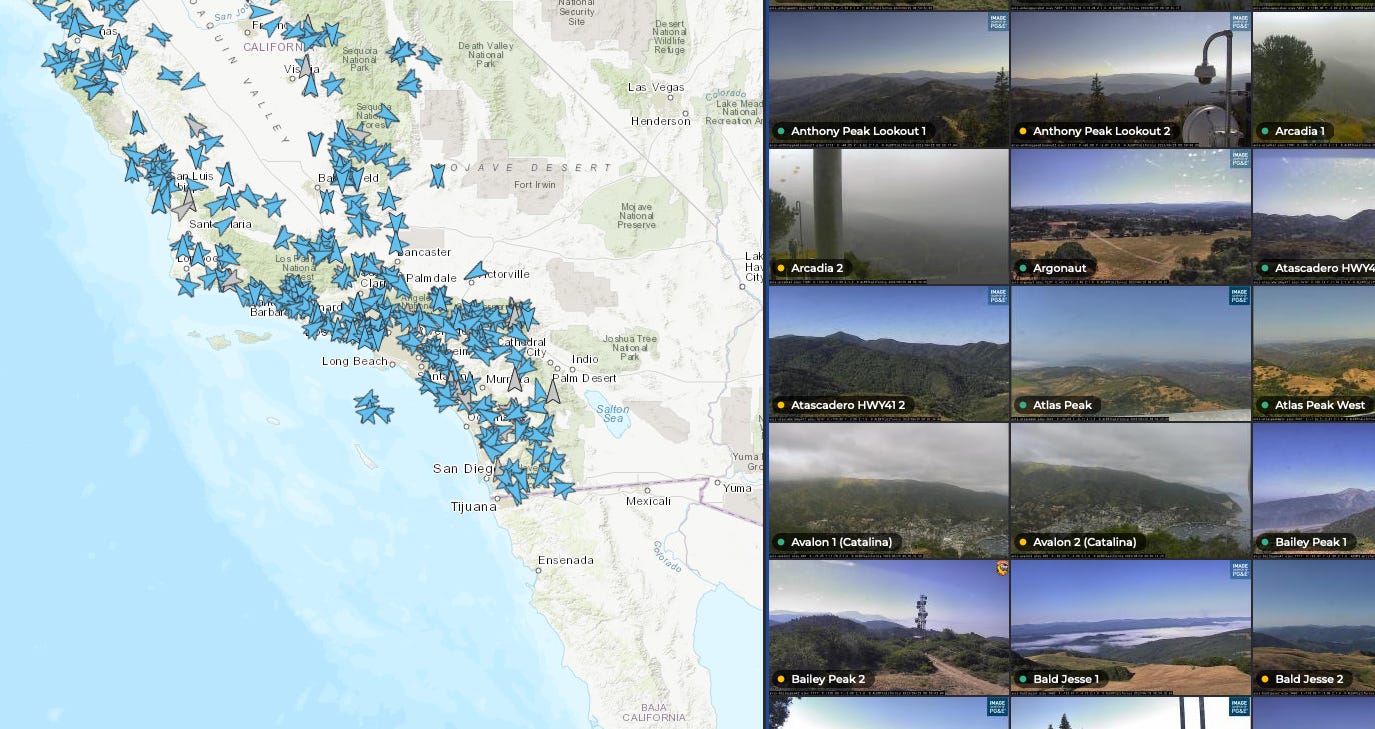

I'm definitely bookmarking the ALERT page. I love having nature webcams up while I'm at work to rest my eyes and mentally escape
"And, you know, the whole carbon footprint thing. But still! Fun story!" Oh yeah, that darn pesky carbon footprint thing. What? Well, at least it's a "fun" (which is not an adjective) story, Trivializing what our species is doing to our home planet makes me furious. Where is the Monkeywrench Gang when we need them so desperately. And, why am I commenting on naivety and grand-standing when I could be sabotaging something?